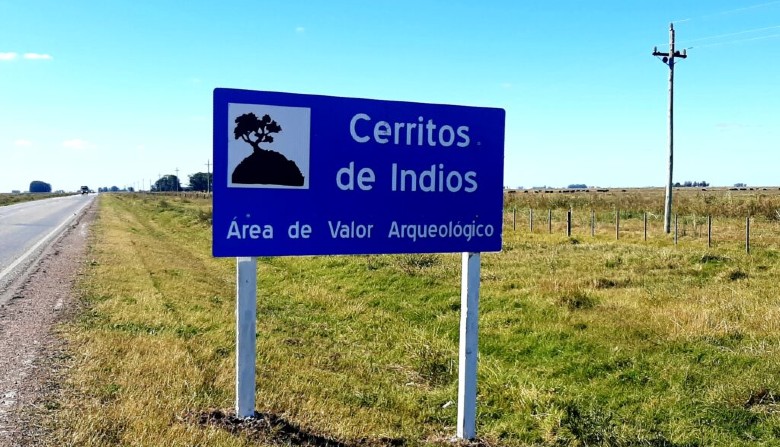Signposts indicating the area of archaeological value, Cerritos de Indios, were recently installed at points on routes 14, 15 and 19 in the department of Rocha. The teachers of the Eastern Regional University Center (CURE) of the University of the Republic (Udelar), Camila Gianotti and Laura del Puerto, took part in this work.
“The proposal to have road signs pointing out some areas of particular archaeological value associated with Indian hills, is part of a broader strategy to value and make this rich heritage visible” was pointed out from Udelar.
CURE teachers Camila Gianotti and Laura del Puerto, who are part of the initiative and have a long working process linked to Los Cerritos, explained the importance of giving visibility to these areas of archaeological value.
The efforts to materialize this idea arose as part of the lines of action that are developed within the framework of the agreement between the CURE and the National Colonization Institute (INC), through which three Research, Monitoring and Conservation Units (UIMC) were created. ) in an INC camp located in the India Muerta wetlands. These units, which correspond to three sets of Indian hills, are co-managed between the CURE, the INC and the Cerros Lindos group of settlers and have been the focus of a set of collaborative, multidisciplinary and inter-institutional actions to enhance and conservation of biocultural heritage.
Although this was the initial driving force behind the proposal, once the negotiations began, it was considered pertinent to extend the signage to other areas of the department. Although the Indian hills have a wide distribution in the lowlands of the east of the country, some points on routes 14, 15 and 19 were selected for the placement of road signs, linked to areas of particular archaeological interest because they include sites that have been intensely investigated and some of them have even been declared a National Historical Monument.
To achieve the installation of the signs, the request for road signs indicating Cerritos de Indios was processed before the Ministry of Transportation and Public Works. The sign was approved and designed jointly with the road signage design division of the MTOP and the placement points were coordinated, indicating access to areas of archaeological relevance due to the presence of Indian hills.
visibility
Those who carried out the initiative indicated that making it visible is one of the socialization measures of this rich heritage, with a view to its enhancement and conservation. It was noted that the signage does not indicate specific places, but rather seeks to attract attention and arouse interest while traveling through archaeological landscapes that have been built for thousands of years. It is expected that the billboard will function as a call, both for local residents as well as for travelers and tourists, which motivates interest in learning more about the Indian hills, their past and present history, their cultural, natural and productive values, their conservation threats and challenges. For this tool to be effective, it must necessarily be complemented with other forms of socialization that allow responding to the interest generated, providing quality information and easy access for all audiences.
There are several actions that make up this socialization and awareness strategy. Some have already materialized and others are in the process of gestation, with the support of different sectoral funds (CSEAM, FMV-ANII, CSIC) and with the participation of different institutions and students and teachers from different dependencies of the University of the Republic.







